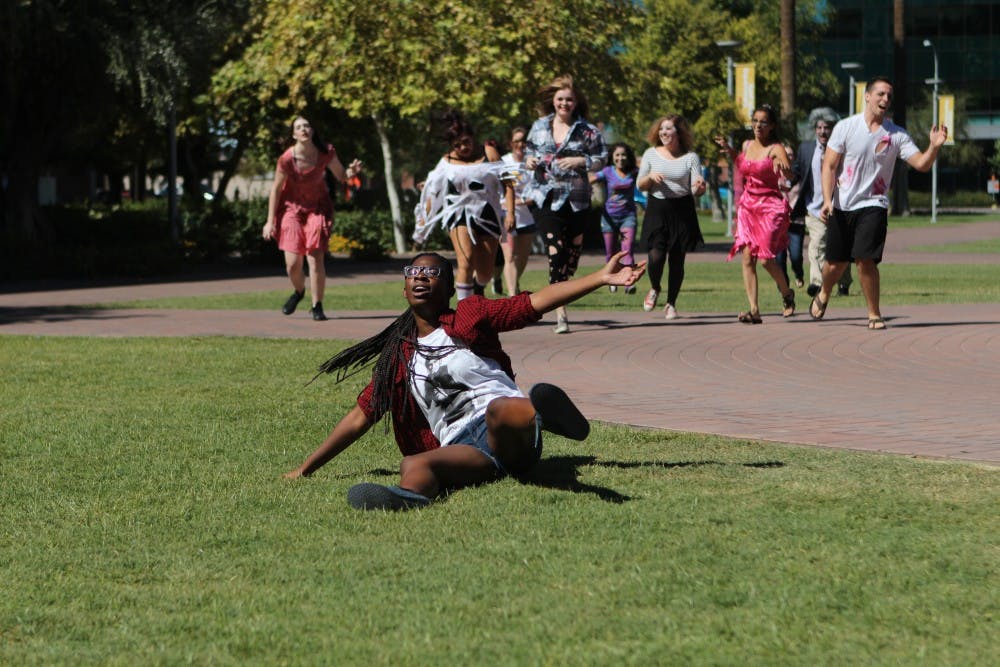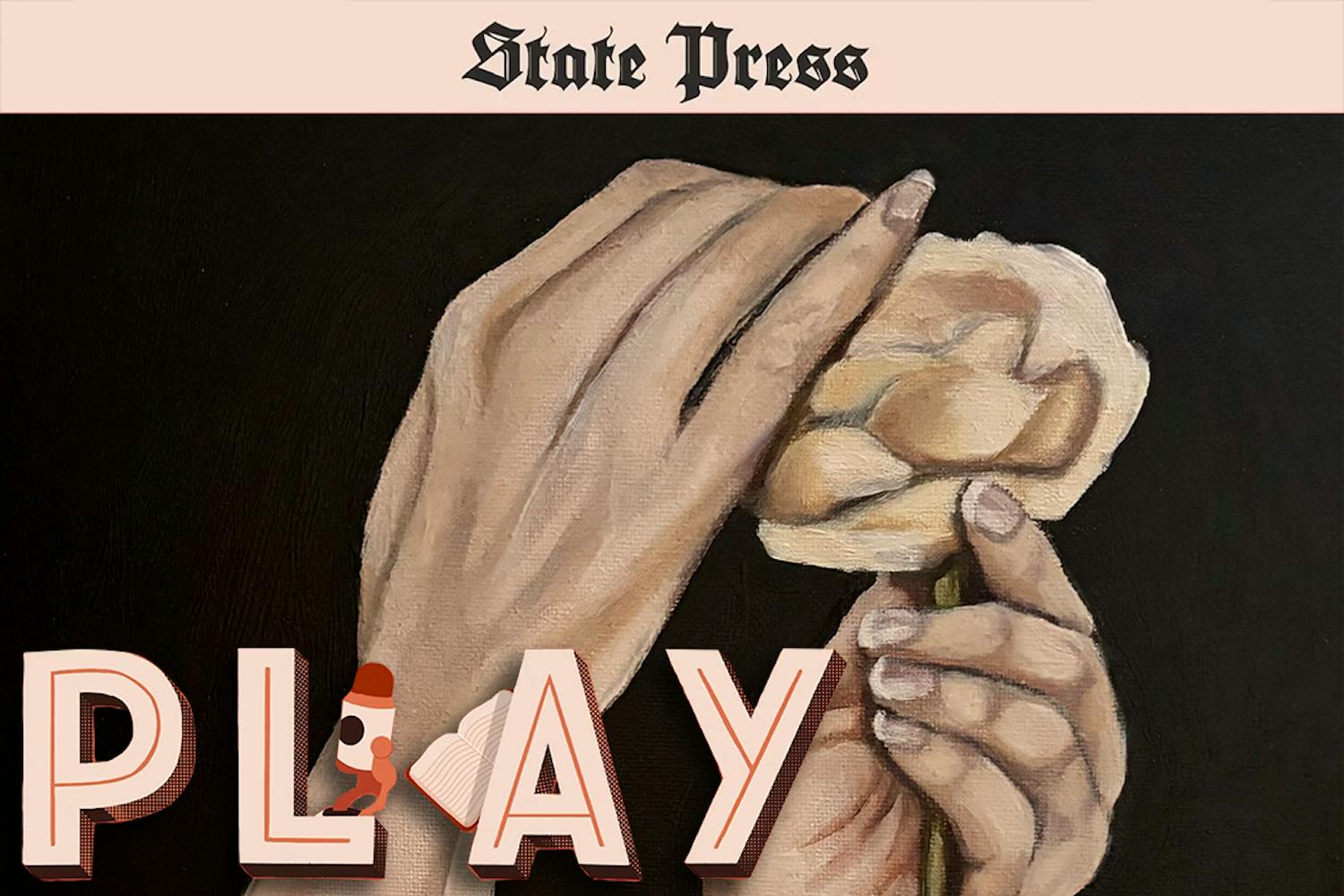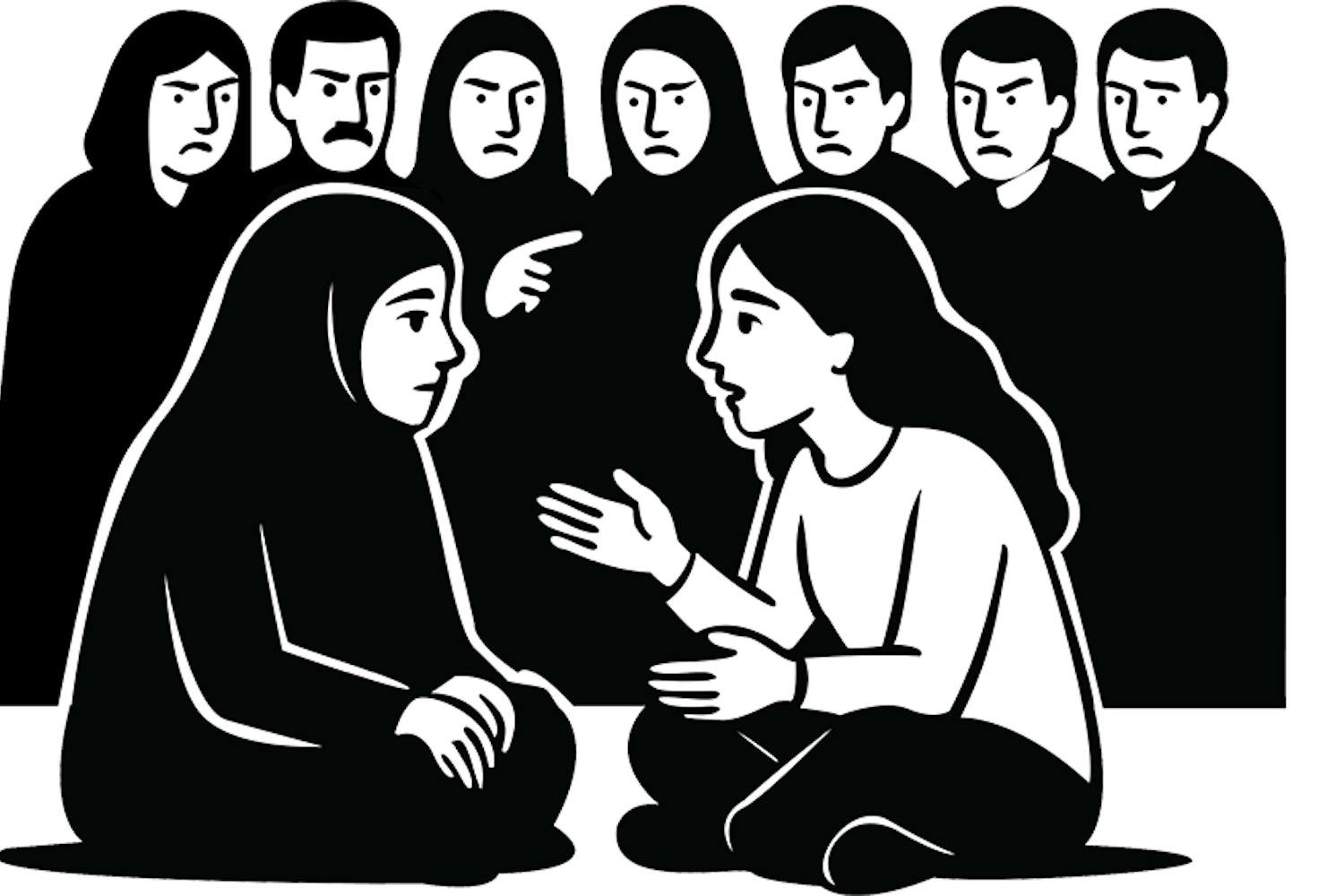 English literature and education Junior Jodi Walters falls down as a group of students dressed as zombies chase her down. The department of English’s English Education Program, the Center for Science and the Imagination and the College of Liberal Arts and Sciences at ASU hosted the event with support from Abrams Books.(Photo by Dominic Valente)
English literature and education Junior Jodi Walters falls down as a group of students dressed as zombies chase her down. The department of English’s English Education Program, the Center for Science and the Imagination and the College of Liberal Arts and Sciences at ASU hosted the event with support from Abrams Books.(Photo by Dominic Valente)Bloodthirsty zombies, covered in blood and ripped clothing, ran through ASU’s Alumni Lawn forcing “high school drama students” to seek refuge in the Old Main Carson Ballroom.
In the spirit of Tom Leveen’s book launch, ASU’s English 471 students gave spectators the essence of his narrative "Sick" on Tuesday.
"Horror is almost always something else," Leveen said. "It's never just a scary story. Sometimes it is, but those are usually the ones we don't like ... or don't remember."
The department of English’s English Education Program, the Center for Science and the Imagination and the College of Liberal Arts and Sciences at ASU hosted the event with support from Abrams Books.
Education senior Vanessa Cruz was one of the 10 English students who dressed up as a zombie.
The rest of the students in the class pretended to be scared high school students to mirror the plot of "Sick," she said.
"Sick" tells the story of a zombie apocalypse that transpires at a high school. It leaves two troublemakers and theater students to come together to fend off the bloodthirsty attackers.
Before the zombie actors entered the Carson Ballroom, they assembled to give one last performance.
“(Our professor) asked for volunteers to do the 'Thriller' dance,” Cruz said.
The dance went so well their professor, James Blasingame, and his students gave an encore performance inside the ballroom before the event began.
Blasingame focuses primarily on young adult literature.
“A few years ago we did vampires,” he said. “This year is all about the zombies.”
The event was the first place people could purchase Leveen’s book "Sick," Blasingame said.
Even though zombies seem to be a trending topic, Leveen said the zombie craze has been occurring for decades.
“There has always been a sort of subculture of zombies,” he said. “This is not a new thing by any stretch.”
English graduate student Emily Zarka proved Leveen right with her presentation of where modern-day zombies come from, referring to novels such as Mary Shelley's "Frankenstein."
Zarka and Leveen also emphasized zombies having a deeper meaning in movies and literature.
“Horror should be or has to be, in my opinion, contextualized,” Leveen said. “It comes from a time and a place.”
Zarka used many examples, including the 1968 movie "Night of the Living Dead."
A scene where a girl is eating her father could be argued to relate to the time period where youth was starting to rise up, she said.
Peter Goggin and Shawn Mitchell, who teach English at ASU, also presented short programs on zombies to contribute to the zombie-themed book signing.
Mitchell left his spectators with the knowledge of positives that can come from a zombie apocalypse.
“(You) don’t have to worry about work … just killing zombies,” he said.
Goggin said zombies would require people to think in different ways and break out of the brainwashed molds society has put them in to add to the positive of an apocalypse.
A zombie apocalypse could also help the young generation, Leveen said. Young adults know who the enemy is and can kill the zombies right in front of them.
He said it could do wonders for teenagers who suffer from bullying or feel they need to cut themselves.
“I would argue the students aren’t monsters at all,” Leveen said. “It’s the monsters the students bring from home.”
Leveen said his book has faced a lot of criticism for the brutality of his writing.
“If the violence in ‘Sick’ is graphic, it’s because violence is graphic,” he said.
Victoria Aldana, a junior at Estrella High School in Avondale, attended the event in a group of 18 for their book club’s field trip.
Aldana agreed that a zombie apocalypse could be a good thing and said this was her first in-person encounter with an author.
“(Leveen) seems like a real people person,” she said. “He’s basically a teen trapped in an older man’s body.”
Leveen signed copies of his book when the event ended.
Zarka concluded the event with one final thought for her listeners when it comes to watching or reading about zombies from this point on.
“What I am asking you to do, and all the other speakers are asking you to do, is to … look past the rotting flesh and see what really lies beneath them,” she said.
Reach the reporter at jmhobbs@asu.edu or follow her on Twitter @jamiemhobbs




